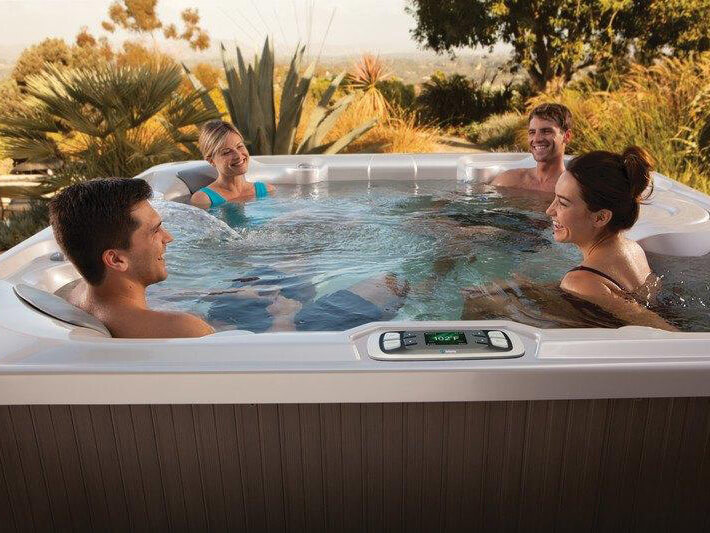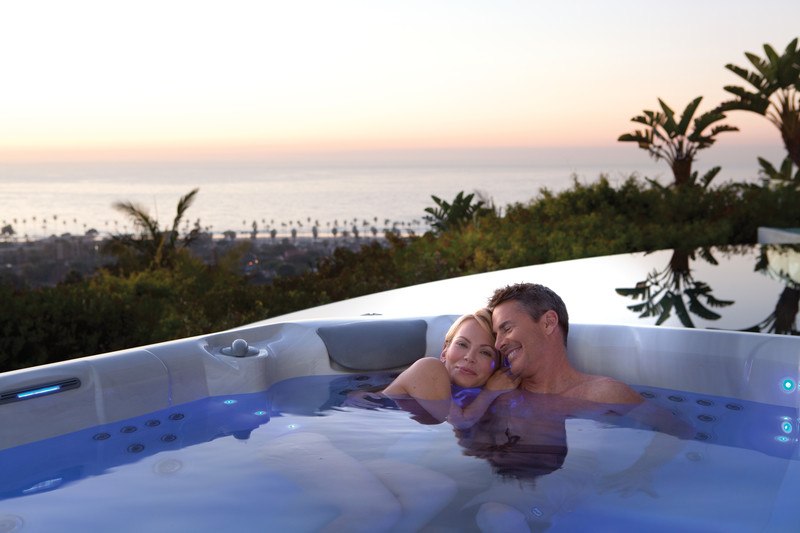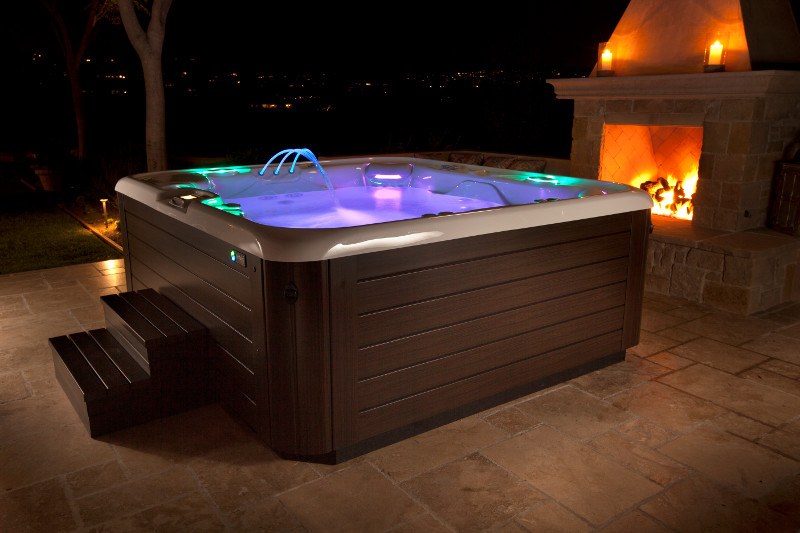
Authors of an article published in Nature Communications last year contend that microbial life began in a hot spring in what is now Western Australia. That hot spring was a fantastic place for single-celled and nascent multi-celled organisms to thrive. In fact, those organisms flourished to the point that the hot spring eventually couldn't contain them all. Thus began the great movement of our history—from nature's hot tub to the modern spa in your own backyard.
A LOVE AFFAIR FROM THE START
Given what we know about the joys of hot-tubbing, we think it's safe to assume early humans enjoyed a good soak. When they stumbled upon a turbulent hot water spring, it's likely they immersed themselves and found pleasure in it. So it's really no surprise that in time some began settling near hot springs on the Tibetan Plateau in central Asia. The many benefits of the springs probably brought great relief after a long day of hunting and foraging for food.
As humans continued to evolve over centuries, their relationship to hot water began to change. Here are a few of the early innovations:
- Hot Water in Homes: In Ancient Egypt, the wealthy built bathing chambers in their homes and took “showers” with the help of body servants who poured jugs of water over their heads. This method was fine if you were the one bathing, but a nuisance for servants forced to heat and carry the water to the chambers.
- Improved Natural Hot Springs: Ancient Greeks built “thermal complexes” on hot springs, believing that the water had the power to heal. They carved seats from the natural rock, creating elegant and accommodating areas in which to bathe and relax. The Ancient Romans eventually copied the Greek style and advanced bathing techniques.
- Artificially Constructed Hot Springs: Relying on an ancient form of concrete, Roman architects around 200 BCE started creating public bathhouses. By 33 AD, 170 baths had been built in Rome. Aqueducts, which used gravity alone to move water from higher elevations, channeled cold water to the bathhouses. An intricate heating system called the hypocaust warmed the water and, eventually, the floors and walls as well. The Ancient Romans were an industrious and expansionary culture, and many of the baths they built still exist.
After the fall of the Western Roman Empire in 476 AD, the upkeep of large communal baths ended. During the Medieval period, many disappeared while others became social centers and, to the chagrin of the Catholic Church, even brothels. However, the bathing tradition persisted in Japan and elsewhere in the world, eventually inspiring the hot tubs enjoyed today.

JAPAN INSPIRES THE MODERN HOT TUB
While people enjoyed soaking in hot water all over the world, it was in Japan that the practice which led to the modern hot tub flourished. Japan consists of volcanic islands with many natural hot springs in which people have soaked for centuries. A love of hot springs led the Japanese to develop three unique styles of hot baths:
- Onsens: Public or private bathing houses located on or around natural hot springs, which supplied geothermal heat.
- Sentōs: Artificially-constructed communal bathhouses, similar to Roman bathhouses and built-in imitation of natural hot springs. Sentōs are heated by boilers or furnaces.
- Ofuros: Private, personal wooden hot tubs built (or installed) for home use. Ofuros, traditionally wood-heated, is roughly the size of American bathtubs but about three to four times deeper. Intended for relaxation rather than cleanliness, Ofuros are the precursors of modern hot tubs.
After WWII, American troops returning from Japan brought with them the bathing culture of the Onsen, as well as wooden Ofuro tubs, and inspired the first wooden hot tubs in the US. From there, vineyard workers and migrant "flower children" used discarded wine barrels and vats to begin creating hot tubs in the 1960s, making homemade, wood-fired heaters with varied success.

HOT SPRING® PERFECTS THE HOT TUB
The wooden hot tubs manufactured in America from the 1940s through the 1960s were mainly products of California. Most did a good job of holding hot water, but the wood invited issues, namely bacteria, mold, and leakage. These early hot tubs had no filters, and as the wood corroded, the tubs lost their ability to hold water.
But a huge advancement came in 1956, when in an effort to relieve a family member of some of the discomfort of rheumatoid arthritis, the Jacuzzi brothers invented the first portable hydrotherapy pump. Twelve years later, the brothers built jets directly into the walls of the tubs. It was a major innovation that sparked an industry.
American-made hot tubs have improved greatly since then. In the late 1960s, wooden hot tubs were replaced with more durable fiberglass. Fiberglass, in turn, was replaced by even stronger acrylic in the 1970s and 1980s.
Watkins Wellness® was instrumental in the shift, introducing a portable spa made of vinyl ester resin and acrylic, rather than the standard polyester resin. Watkins also began installing full insulation, top-loading filters, and underwater lighting. As home hot tub manufacturing processes continue to improve, the company moved away from build-your-own hot tub kits and toward full-service delivery, installation, and service.
Today at Watkins, we continue to innovate with your love of hot-tubbing in mind. Leading spa collections like the Hot Spring Highlife include hot tubs big enough for seven, with 43 powerful jets. Advanced filtration systems keep the water as clear as glass and as pure as desert air. Temperature and jet settings, lights, waterfalls, can all be controlled wirelessly, and service plans provide professional help with maintenance and repairs. At long last, our dreams have come true. Truly, we now live in the golden age of hot tubs.
Hot Spring Spas is proud to be doing our part to usher in the golden age of hot tubs. Since we began, we've designed our spas with the utmost attention to detail and elegance. We've engineered them for comfort, to last for decades, and to hold their heat. To learn more, check out our website to find a dealer in your area, download a brochure, or request a quote.